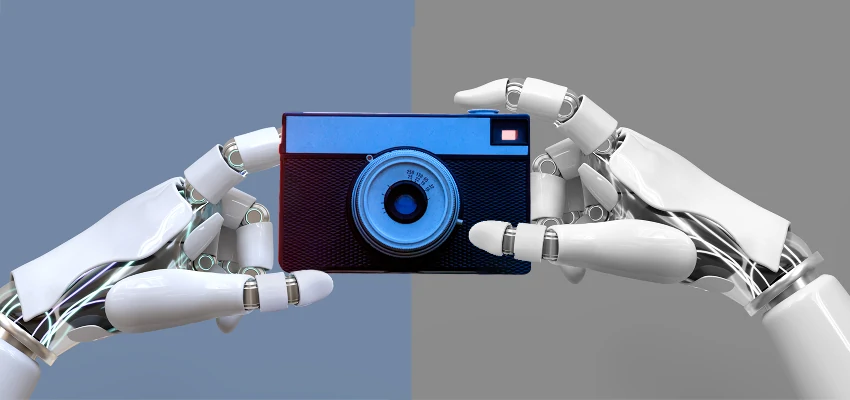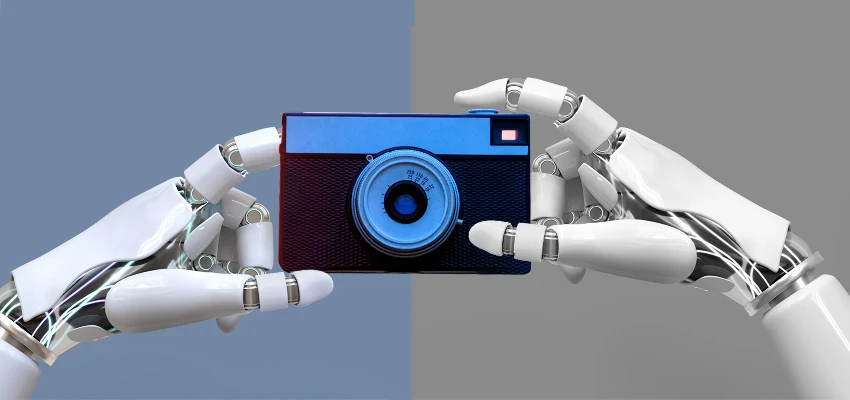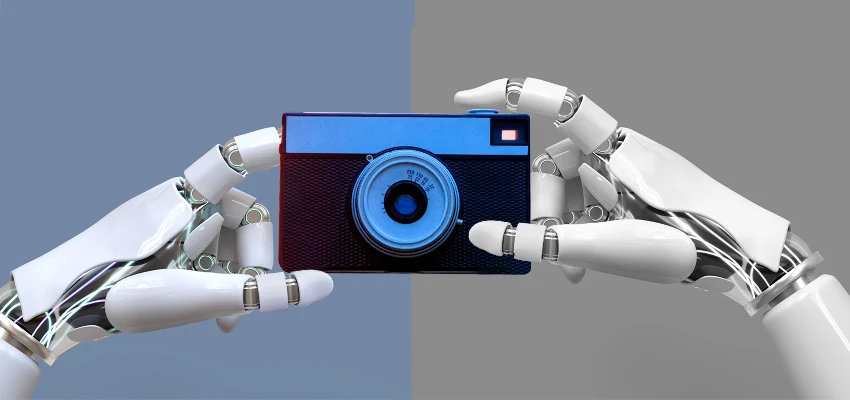In recent years, the landscape of AI in photojournalism has sparked intense discussion regarding its implications for the industry. As artificial intelligence technology evolves, it presents both remarkable opportunities and daunting challenges for visual storytellers. Notably, the Emmy award-winning visual artist Kira Pollack is exploring how AI can help preserve vital photo archives while navigating the complex landscape of copyright and authenticity. With the potential to radically reshape photojournalism technology, AI impacts photography by offering innovative solutions to categorize and contextualize the rich history captured by professional photojournalists. By embracing the intersection of AI and visual media, we can better understand its role in determining the future of journalism and the memory it seeks to preserve.
The integration of artificial intelligence into visual storytelling represents a fascinating frontier for contemporary journalism, merging cutting-edge technology with traditional photographic practices. Innovations in this realm can transform how images are cataloged and interpreted, serving as a crucial element in preserving our visual history. In this discussion, terms such as “photography technology” and “AI influence on journalism” highlight the ongoing evolution of media in our digital age. As professionals grapple with the changes brought by AI, it opens a conversation about the ethical implications of machine-driven narratives and the preservation of photo archives. Understanding how to balance innovation with integrity may very well define the next chapter for journalism and its role in society.
The Role of AI in Photojournalism
Artificial intelligence is rapidly reshaping various sectors, and photojournalism is no exception. Kira Pollack’s insights reveal how AI can offer both challenges and opportunities within this field. Tools that can analyze and catalog vast archives of images have the potential to revolutionize how we preserve the visual narrative of the past, enabling journalists to sift through thousands of photographs for those that best represent the story at hand. This capability not only safeguards historical records but enhances the efficiency of photo management.
However, while AI presents promising advancements, it also raises pressing concerns about authenticity and trust. As AI-generated imagery becomes more sophisticated, the line between real and fabricated images blurs, threatening the integrity of photojournalism. To combat this, Kira Pollack argues for the necessity of employing AI to enhance, rather than diminish, the credibility and artistry of genuine photojournalistic work.
Challenges in Preserving Photo Archives
The preservation of photo archives is a critical challenge facing the field of photojournalism today. Kira Pollack emphasizes that archives are not merely collections of images; they are essential narratives reflecting the historical context of significant events. With an overwhelming majority of journalists’ photographs remaining unpublished, there is a risk of losing these invaluable cultural artifacts. Pollack’s research investigates how modern technology, particularly AI, can play a pivotal role in safeguarding these treasures.
Additionally, as more photojournalistic work moves into digital spaces, it becomes increasingly vulnerable to copyright infringement and unauthorized usage. There lies a paradox, however, as the same technology that poses a threat can also serve as a preventive measure against such risks. By utilizing AI algorithms to monitor and manage the usage of these archives, photojournalists can better protect their intellectual property while ensuring their stories are accessible and preserved for future generations.
Kira Pollack’s Vision for the Future of Journalism
Kira Pollack’s fellowship at the Shorenstein Center represents a crucial convergence point for technology and journalism. Her vision encompasses not only adapting to the rapid advancements in AI but also critically analyzing their implications for the future of the industry. Pollack aims to explore how AI can bolster the integrity of journalism by improving the accessibility and reliability of photo archives, thus reinforcing the foundational values of truth and memory.
Ultimately, Kira Pollack desires to cultivate a collaborative dialogue among technologists, ethicists, and journalists, ensuring that all stakeholders contribute to a balanced view of emerging technologies. This interdisciplinary approach is vital as it fosters innovative solutions to the ethical dilemmas presented by AI in photojournalism, enabling professionals to respond proactively rather than reactively to a continually changing media landscape.
AI’s Impact on Photography Craft and Industry
As Kira Pollack reflects on the dawning age of AI in the photography world, the implications for both the craft and the industry are profound. Initially, her response was tinged with caution, recognizing the existential threat posed by AI’s capacity to generate hyper-realistic images. As photojournalism grapples with authenticity issues, the rise of synthetic imagery raises questions of credibility in a profession built on trust. Pollack’s insights emphasize the dual-edged nature of this technology.
Yet, Pollack also acknowledges the untapped creative potential that AI presents for photographers. By harnessing AI’s ability to generate insights and analyze large datasets, photographers can expand their creative horizons and refine their skills. This balance of creativity and technology hints at a future where AI not only coexists with traditional photography but enhances the process of storytelling, making the work of photojournalists more dynamic and engaging.
Ethical Considerations in Using AI for Photo Preservation
The intersection of AI technology and photojournalism brings forth critical ethical questions surrounding the use and preservation of images. Kira Pollack’s work emphasizes the need for ethical frameworks to safeguard photo archives from misuse while leveraging AI’s capabilities for beneficial purposes. The potential for AI to inadvertently compromise the integrity of these images highlights the importance of setting comprehensive guidelines that protect the rights and intentions of photographers.
Furthermore, as Pollack explores the implications of AI in preserving photo archives, it raises concerns about privacy and consent. The desire to digitize and curate extensive collections must be balanced with the ethical responsibility to ensure that these materials are handled with the utmost respect for the subjects captured within them. A dialogue on these issues is crucial as it can lead to more responsible advancements in AI technology, upholding the essential values of authorship and truth in photojournalism.
Navigating the Future of Photojournalism with AI
The future of photojournalism is poised for transformation as it navigates the integration of AI-driven technologies. Kira Pollack’s vision seeks to align advancements in tech with the enduring principles of journalism to ensure that the essence of storytelling remains intact in an evolving landscape. By actively exploring how AI can aid in understanding complex images and contexts, Pollack is advocating for a future where technology strengthens the narrative, rather than detracting from its authenticity.
Emphasizing the importance of adaptability, Pollack encourages photojournalists to embrace the potential of AI in their work while remaining vigilant of its challenges. This proactive stance can help reshape the future of the industry, leading to innovative practices that prioritize truth, representation, and the preservation of valuable visual records. As the lines between traditional and digital storytelling blur, the role of photojournalists becomes increasingly vital in guiding public perception and preserving reality.
The Importance of Collaboration Across Disciplines
Kira Pollack’s work exemplifies the necessity for collaboration between technology experts, photojournalists, and policymakers in navigating the complex landscape that AI introduces. By engaging with various disciplines, Pollack aims to foster a holistic understanding of how AI can enhance the preservation of photo archives while addressing ethical concerns. This multifaceted approach allows for the development of strategies that not only advance technology but also honor the integrity of the photographic medium.
Moreover, this collaboration can provide essential insights into the impacts of AI on public trust and perceptions of truth in journalism. As stakeholders from different backgrounds come together, they can co-create frameworks that are considerate of not just technological advancements, but also the historical and cultural significance of photography. This collective responsibility will be fundamental in establishing standards that safeguard the future of journalism amidst the rapid evolution of digital technologies.
Exploring Innovations in Photo Cataloging
Innovations in photo cataloging stand at the forefront of Kira Pollack’s research as she investigates how AI can streamline the organization of vast archives. By implementing AI to assist in categorizing images from significant events, such as the Iraq War or the January 6 insurrection, Pollack is uncovering ways to make these historical records more accessible and meaningful. This technology can help manage the enormous volume of visual data while providing insights that enhance storytelling and contextual understanding.
The potential for AI-driven cataloging systems extends beyond mere organization. By integrating metadata that captures the intent and narrative of the photographs, AI can create a richer, more immersive experience for users. Photographers’ legacies can be preserved and communicated more effectively, thereby ensuring that the visual history captured by photojournalists remains a vital part of the cultural conversation for years to come.
Maintaining Authorship in an AI-Dominated Landscape
As AI technologies begin to redefine the landscape of photojournalism, maintaining authorship and ownership of work becomes a central concern. Kira Pollack emphasizes the need for photographers to secure their rights amidst unprecedented challenges posed by AI, particularly in how their images might be used without consent. Striking a balance between leveraging AI for preservation and protecting the original creators is fundamental for the credibility of the journalism profession and the integrity of visual storytelling.
In light of these challenges, Pollack advocates for clear guidelines that delineate how AI can be utilized responsibly within the realm of photojournalism. By prioritizing authorship, the industry can harness the power of AI while ensuring that photographers are recognized and compensated for their contributions. The continued existence of authentic photojournalism relies on rigorous policies that respect the rights of creators while embracing the advantages that technology can offer.
Frequently Asked Questions
How is AI impacting photojournalism technology?
AI is significantly impacting photojournalism technology by enhancing image analysis and metadata tagging, which improves the organization and accessibility of vast photo archives. By using AI to evaluate and categorize images, photojournalists can preserve visual history with greater efficiency, addressing urgent challenges in archiving and retrieving content.
What are the benefits of using AI for preserving photo archives in journalism?
Using AI for preserving photo archives in journalism offers numerous benefits, including improved cataloging, organization, and context for images that capture crucial moments in history. AI can help safeguard visual integrity and legacy by making these archives more discoverable, while addressing important issues related to authorship and copyright.
What role does Kira Pollack see AI playing in the future of journalism?
Kira Pollack envisions AI playing a pivotal role in the future of journalism by potentially transforming how photojournalists preserve their work. Her research focuses on whether AI can help maintain the truthfulness and context of photojournalism, leveraging technology to support the core values of truth, authorship, and memory.
Can AI help address the challenges of trust in photojournalism?
Yes, AI can help address the challenges of trust in photojournalism by focusing on preserving real images rather than creating fabricated ones. By using AI to responsibly unlock and contextualize photo archives, journalists can enhance transparency and maintain public trust in visual storytelling.
What are the potential risks of AI in the field of photography and photojournalism?
The potential risks of AI in photography and photojournalism include the erosion of trust due to the generation of synthetic images and copyright issues arising from unauthorized use of photographers’ work in training models. These concerns highlight the need for responsible AI deployment that respects authorship and protects the integrity of photojournalism.
How is AI being experimented with in photojournalism according to Kira Pollack’s initiatives?
Kira Pollack’s initiatives involve conducting case studies with AI to analyze and interpret complex images from photojournalists’ archives. For instance, she highlighted how AI successfully assessed the emotional complexities and contextual details of a war photograph, suggesting the potential for AI to enhance understanding and preservation of visual narratives in journalism.
What is the significance of Kira Pollack’s research on AI’s impact on photography?
Kira Pollack’s research is significant as it seeks to balance the advantages and challenges posed by AI in photography. By advocating for ethical AI use that emphasizes the preservation of historical visual records, her work aims to foster a future where technology aids in the safeguarding of photojournalism’s core values.
How does AI address the issue of accessibility in photojournalism archives?
AI addresses accessibility in photojournalism archives by facilitating easier searching, categorizing, and understanding of large collections of images. This technological advancement enables more efficient retrieval, allowing important historical images to be accessed and appreciated by wider audiences.
What challenges do photojournalists face regarding archiving their work, and how can AI help?
Photojournalists face challenges such as the vast number of uncataloged images and the risk of losing significant visual history. AI can help by providing tools to classify, contextualize, and digitally preserve these images, ensuring that their work remains accessible and that the memories captured are not lost.
What ethical considerations arise from using AI in photojournalism?
Ethical considerations in using AI in photojournalism include the protection of photographers’ rights, the potential for copyright violations, and ensuring the responsible use of images without distorting their context. Addressing these issues is crucial to maintaining trust and integrity in the field of journalism.
| Key Point | Description |
|---|---|
| Emerging Threats of AI | AI technology poses threats to photography through copyright issues and the creation of synthetic images that challenge the authenticity of visual media. |
| Potential of AI in Preservation | Kira Pollack’s research focuses on using AI to catalog and preserve valuable photojournalistic archives to maintain a historic visual record. |
| Archives as Living History | Pollack emphasizes the importance of archives in representing the visual history of our world, many of which are at risk of being lost. |
| AI Case Studies | Experimental work with AI has shown it can analyze complex war imagery, providing insights and context that enhance understanding of the photographs. |
| Ethical Implications of AI | The conversation around AI encompasses concerns of trust erosion in images and copyright risks, highlighting the importance of using AI responsibly to safeguard visual truths. |
Summary
AI in photojournalism is a pivotal topic that delves into how emerging technologies can assist in preserving the integrity of visual storytelling. While the rise of AI brings significant challenges, including copyright infringements and trust issues, it also opens new avenues for enhancing the archival process of photojournalism. Kira Pollack’s innovative research demonstrates the potential of AI to not only safeguard these invaluable records but also to deepen our understanding of the narratives they convey. As the industry navigates these technological shifts, it is essential to leverage AI’s capabilities to ensure that the core values of journalism—truth, authorship, and memory—remain intact.



